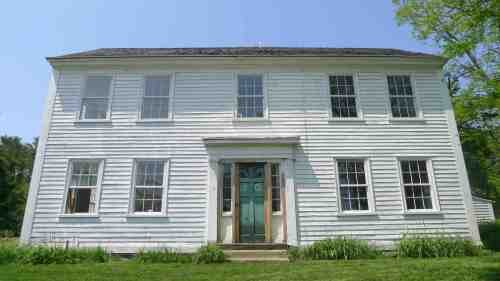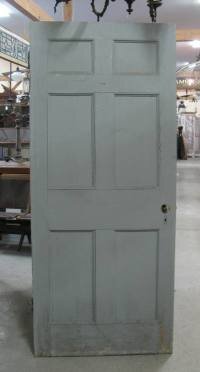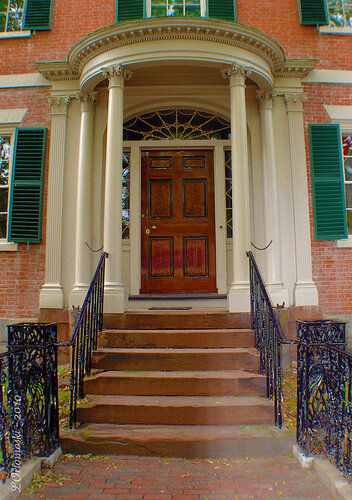Doors Galore (May 30, 2012)

Kevin finally pulled the boards off our front entrance, after replacing some broken glass in three of the sidelights. Now it’s time to intensify our search for a new old door. This mock Federal-style number has a fanlight in the door itself, though by definition a fanlight sits above a door rather than in it. According to Historic New England, our entry would have had a six-panel door, flanked by these sidelights, which are original to the house.
For the last couple months I’ve been trolling around online in search of an antique replacement, but they’re hard to find—and even rarer in the dimensions we need: 34 x 80 inches. So far we’ve visited four architectural salvage places: Restoration Resources and Boston Building Resources in Boston; Nor’East Architectural Salvage in South Hampton, NH; and Olde Good Things in NYC.

All have hundreds of old doors, lined up like dominoes that weigh about a hundred pounds apiece, making it difficult to rummage through the stacks. Nor’east has been the easiest to search because they catalog their doors online, and you can request to see them by number when you visit the physical plant. We found this one (#96) in the right dimensions, but the detail work was shallow and eroding, and the panels didn’t align well with our sidelights. So now I’m carrying around a wax paper template of our sidelights so if I spot a door with the right dimensions I can see how it would line up in situ.

I’d envisioned a natural wood door on our house until we learned from Historic New England that doors were painted until the 1850s (Color Me Federal Instead), when steam-powered machinery made it easier to mill hardwoods.
Even John Gardner, a very wealthy Salem merchant in the early 1800s, had to paint his door. When we toured his home—the fancy Gardner-Pingree mansion, built in 1804 by Samuel McIntire and maintained by the Peabody Essex Museum—I thought I’d found a precedent for a natural wood door on a house from the same period as ours. When I asked the docent about it, he walked me closer and pointed out that the wood grain shown here was faux-painted.
We won’t do faux, but I’m embracing the mandate to paint as an excuse to pick out another gorgeous color by Farrow & Ball.